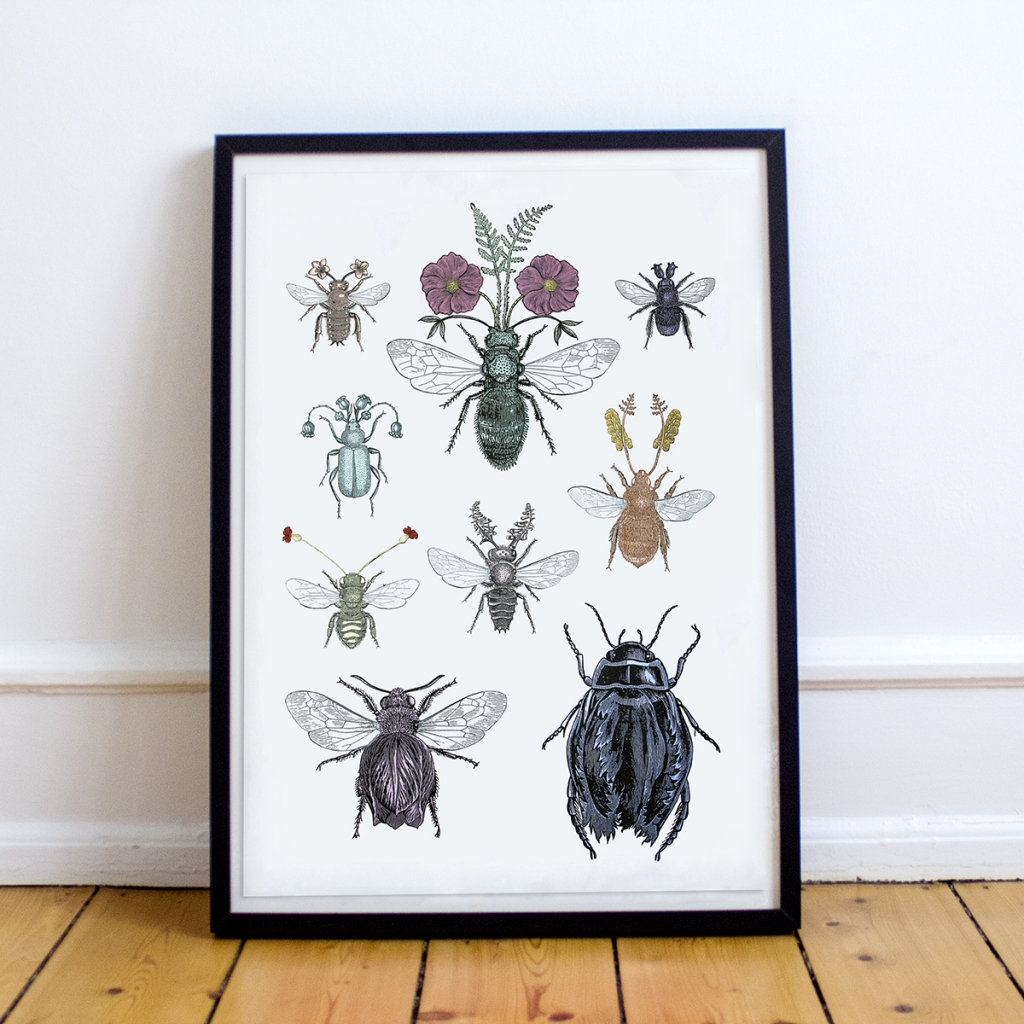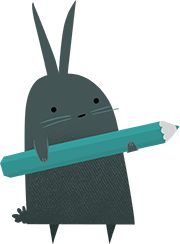Penelope Kenny joined us at the end of 2016, and I could not be more excited to sell her unique and beautiful artwork.
I spoke to Penelope about her work, how her unique co-evolutionary artwork evolved and the techniques she uses to create her amazing statement artworks.
Can you tell us a little about your printmaking experience? Did you study printmaking or discover it organically?
I first studied printmaking as part of an art degree in Melbourne and was originally interested in etching. I took a break from printmaking for some years until I decided to study a degree in Fine Art Printmaking at Brighton University. We were able to experiment with all kinds of printmaking on the course such as relief, intaglio and lithography. I hadn’t done much screenprinting before this but once I began to experiment with the technique I was totally hooked.
Can you talk us through your creative process for making a print?
I use antiquarian books sourced from antique stores and markets, and old ephemera as first reference points when I begin a new image. The hybrids come together using drawing, photocopies and Photoshop, although I try to do as much as I can by hand rather than digitally.
The print evolves as I am printing, and I make decisions on colours and layers as I print; some prints have a lot of layers and have had as many as 37 colours. I make separations for each coloured layer by hand, painting with Indian ink on tracing paper. I print all my work myself and the printmaking process is part of the creative experience for me; often I will make a print with the intention of exploring a new technique or perfecting my skills in some way.
You use very unique paints and inks in your artworks, can you explain a little about them, what qualities they have that you enjoy working with? How did you discover them and why do you favour them?
I make my own screenprinting inks, using powdered pigments mixed with screenprinting mediums. I mix the pigments with metallic powders so the inks have a lovely pearlescent quality to them that really comes to life in sunlight. The reflective quality makes the prints very difficult to photograph so people often comment on how lovely the inks look in real life and upon closer inspection.
Your hybrid creations are quite wonderful, when did you find yourself creating these creatures of evolution and did something in particular inspire you?
I have been interested in interspecies relationships since I was very small. I grew up in Australia and loved going on walks, exploring and searching for wildlife. I drew humans mixed with animals as a child and have always had been interested in strange, hybrid and mythological creatures.
Are there any commercial clients, organisations or individuals out at the moment that you would like to work with either commercially or in a collaborative way?
I would love to learn how to screenprint onto porcelain and to collaborate with a ceramicist to explore how my work could transfer to that medium. I would also really like to produce some more wallpaper; I have printed several designs myself but it is a little too laborious to print commercially on my own. I would also like to undertake a residency in a natural history museum.
Which illustrators, artists, designers are inspiring you at the moment?
There are so many creative and inspiring people; I am constantly amazed by what other people are producing visually. Gert and Ewe Tobias are really interesting artists and amazing printmakers and I am looking forward to visiting the Robert Rauschenberg exhibition at Tate Modern. I am also a massive fan of William Morris; his whole ethos is so relevant to us now.
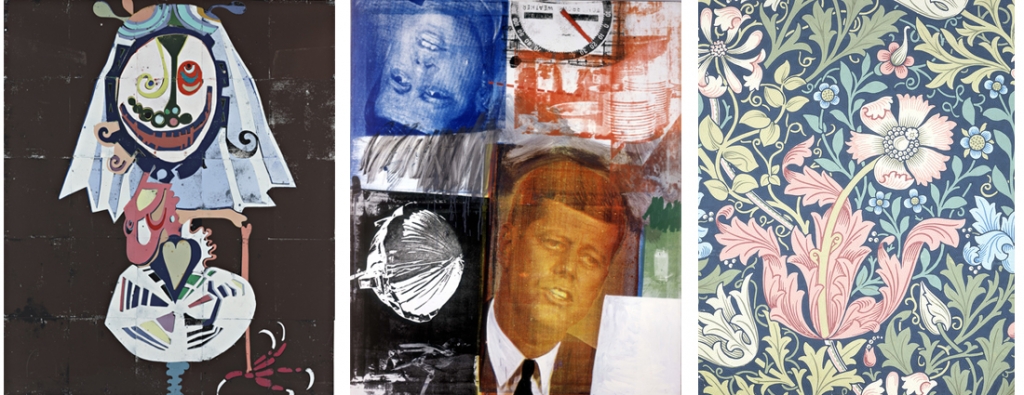
Which websites do you visit regularly?
I spend much more time online reading ‘the news’ than I should but I also love researching websites for images and inspiration and seeing what other artists and makers are up to.
Tell us about your workspace.
I use a space in my lounge room where I store all the materials I use as references and I also have a desk space at Boxbird Studios, where I print. The screenprinting facilities in the studio are excellent and the screen bed is my favourite workspace. Boxbird also has the best drying cabinet; making up screens is a dream. It’s a lovely space in a great location and I get to cycle or walk home after work along the sea.
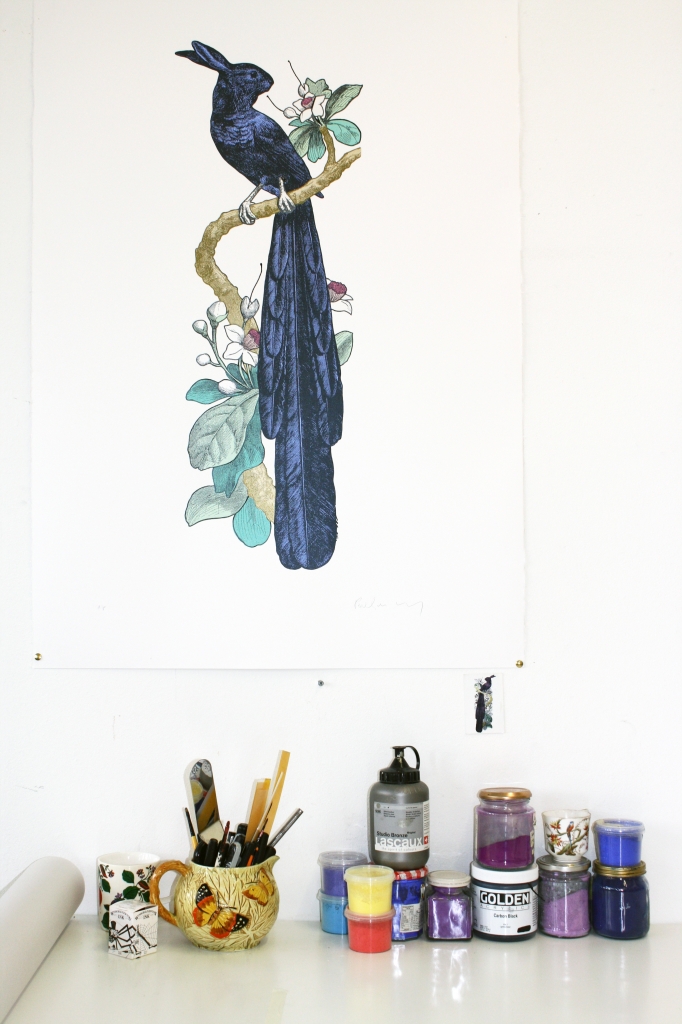
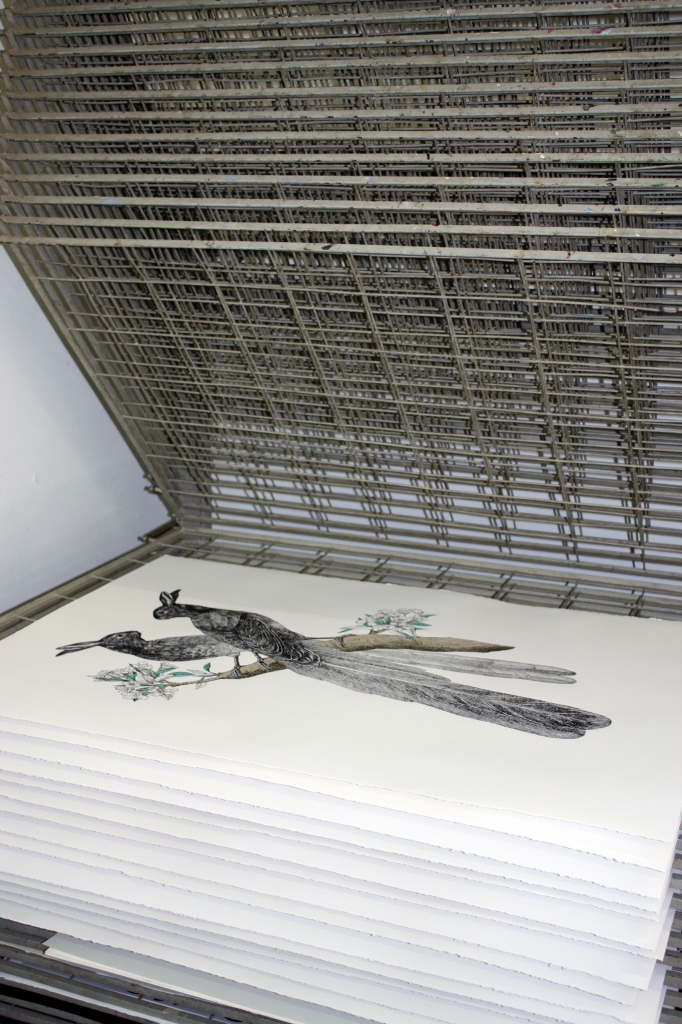
Do you have any interesting projects coming up?
I am working on a series of new large scale prints at the moment and am hoping to have a show sometime this year. I have been chosen as the cover artist for this year’s Artists Open House’s in May and am looking forward to seeing the chosen image displayed around Brighton then.
If we could have asked you any question in the interview what would it have been and what would your answer have been?
Can you recommend us a good book? ‘Wild Ones: A Sometimes Dismaying, Weirdly Reassuring Story about Looking at People Looking at Animals in America’ by John Mooallen.




